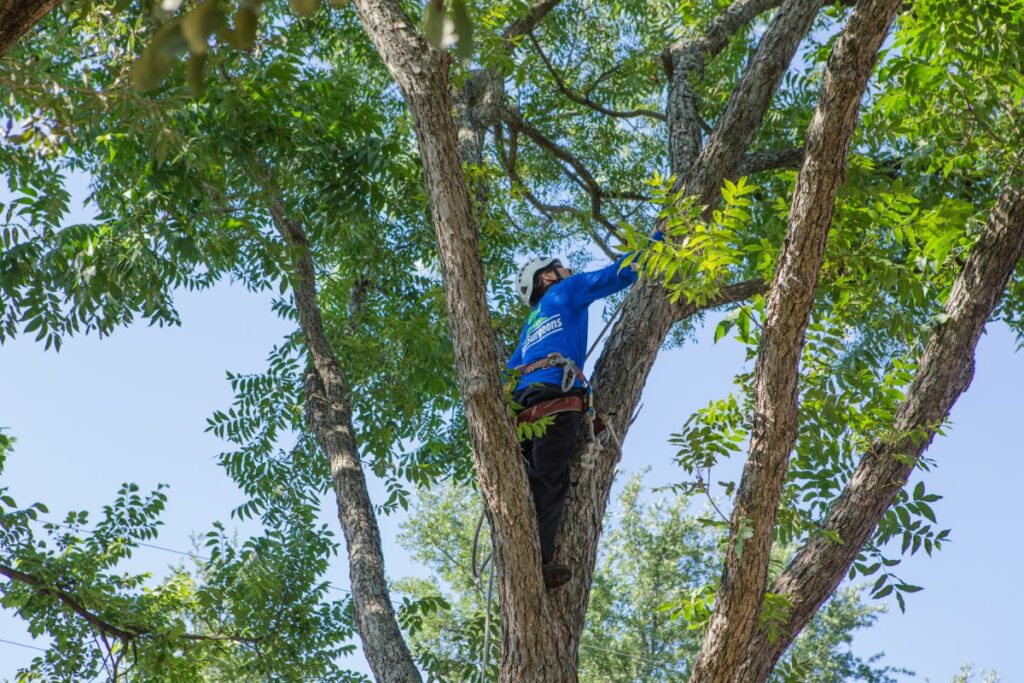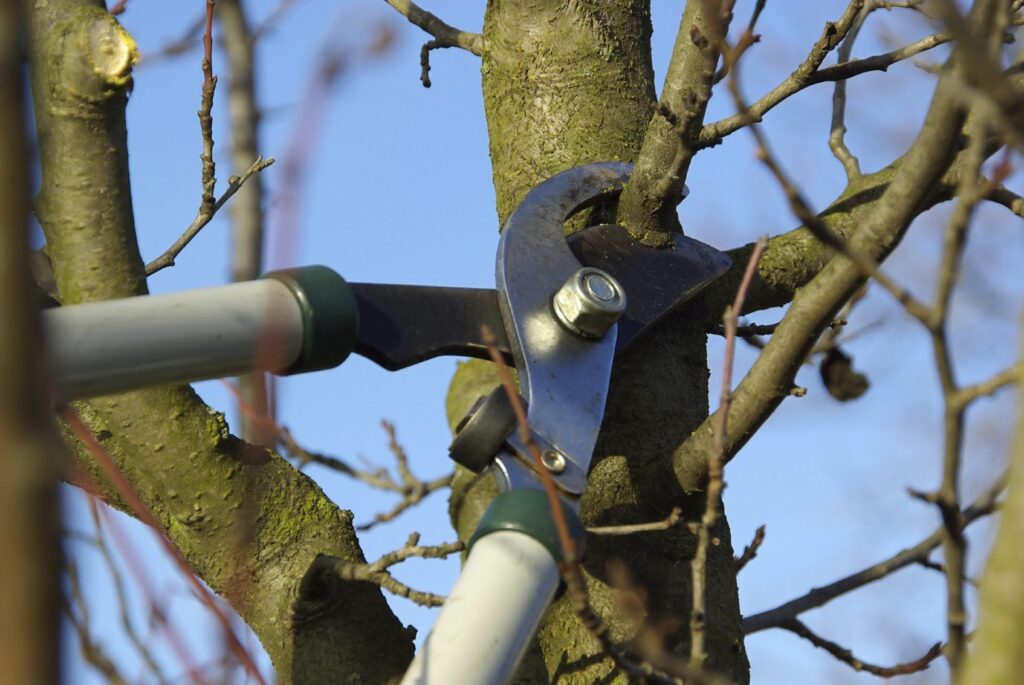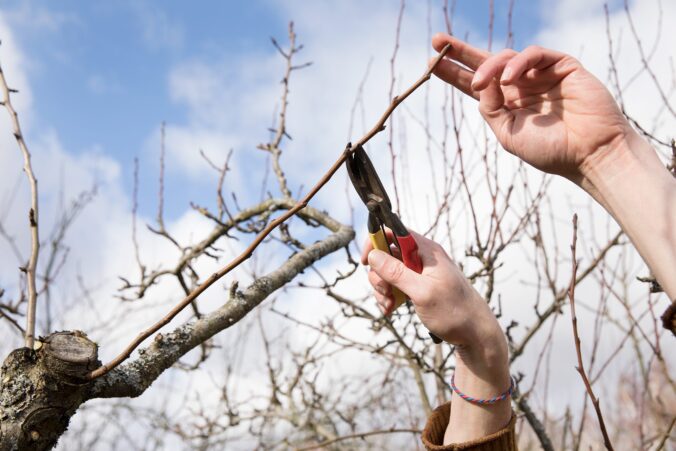Whether you have a small backyard or a sprawling garden, maintaining your trees is essential for their health and the safety of your property. Tree pruning is one crucial aspect of tree care that should not be overlooked. Understanding the importance of tree pruning and knowing when and how to prune your trees can make a significant difference in their growth and overall appearance.
Understanding the Importance of Tree Pruning
Tree pruning is the process of selectively removing certain parts of a tree, such as branches, to promote healthy growth and maintain its structure. Tree pruning services offers numerous benefits for both the tree and its surrounding environment.
When it comes to the benefits of regular tree pruning, the advantages are plentiful. First and foremost, it helps improve the tree’s overall health by eliminating dead or diseased branches. By removing these branches, you prevent the spread of disease or decay to other parts of the tree. It’s like giving the tree a refreshing breath of fresh air, allowing it to thrive and flourish.
But the benefits don’t stop there. Tree pruning also enhances the tree’s aesthetics. By selectively removing branches, you shape the tree, giving it a more pleasing appearance. It’s like giving the tree a stylish haircut, transforming it into a natural work of art. This is especially important for trees that are near structures or along walkways, where proper pruning can prevent branches from obstructing views or causing hazards.

In addition to improving the tree’s health and appearance, tree pruning promotes safety. By eliminating weak or overhanging branches, you reduce the risk of them falling during storms or high winds. This not only protects your property but also keeps you and your loved ones safe from potential accidents. It’s like creating a safe haven amidst nature’s unpredictable elements.
Now, let’s delve into the risks of neglecting tree pruning. Without regular maintenance, trees can become overgrown and develop structural issues. Imagine a tree that has been left to its own devices, growing wild and untamed. Dead or diseased branches may go unnoticed, posing significant dangers in the future. It’s like allowing a small problem to fester and grow into a much larger, more daunting issue.
Overgrown trees can also obstruct power lines and pose a hazard to nearby buildings or structures. Picture a tree that has grown so tall and unruly that it interferes with the smooth flow of electricity. Additionally, the lack of pruning can lead to poor tree health, making it more susceptible to pests, diseases, and decay. It’s like leaving a vulnerable door wide open for unwelcome guests.
Key Tips for Effective Tree Pruning
To ensure effective tree pruning, it is essential to follow a few key tips and guidelines. Timing, tools, and safety should all be taken into consideration when pruning your trees.
Pruning your trees not only enhances their appearance but also promotes their overall health and longevity. By removing dead or diseased branches, you can prevent the spread of infections and improve the tree’s ability to withstand harsh weather conditions.
Best Time for Tree Pruning
The timing of tree pruning plays a vital role in its success. The ideal time for pruning depends on the type of tree and its specific needs. In general, it is best to prune deciduous trees during their dormant season, typically in late winter or early spring. Pruning during this time allows for easier identification of branches and promotes faster healing.
During the dormant season, trees allocate their energy towards root development rather than foliage growth. This makes it an opportune time to shape the tree’s structure, as it minimizes stress and maximizes the chances of successful pruning.
However, evergreen trees can be pruned year-round, as long as extreme weather conditions are avoided. It is advisable to consult with a local tree pruning expert to determine the most suitable time for pruning specific tree species in your area.
Tools Needed for Tree Pruning
Having the right tools is crucial for effective tree pruning. Some essential pruning tools include pruning shears, loppers, pruning saws, and pole pruners. These tools allow for precise cutting and help reach branches at different heights.
Investing in high-quality tools not only ensures better results but also enhances safety during the pruning process. Well-maintained tools with sharp blades make clean cuts, reducing the risk of damage to the tree and minimizing the chances of infection.
It is essential to keep pruning tools in good condition by regularly cleaning and sharpening them. This ensures clean cuts and reduces the risk of disease transmission between trees. Additionally, using disinfectants on your tools between pruning different trees can further prevent the spread of diseases.
Safety Measures During Tree Pruning
Tree pruning can be a hazardous task if not done safely. It is important to take necessary precautions to protect yourself and others during the pruning process. Always wear appropriate personal protective equipment, such as gloves, safety glasses, and a helmet.
Before starting any pruning work, carefully assess the tree’s condition and identify any potential hazards. Look for signs of decay, weak branches, or any structural issues that may pose a risk. By being aware of these factors, you can plan your pruning strategy accordingly and avoid accidents.
Furthermore, be mindful of your surroundings and potential hazards. Clear the area of any objects or obstacles that may impede your movement or cause accidents. If the tree is near power lines or structures, it is recommended to hire a professional tree pruning expert to ensure the work is done safely and efficiently.
Remember, tree pruning is a skill that requires knowledge and experience. If you are unsure about any aspect of tree pruning, it is always best to consult with a certified arborist who can provide expert guidance and ensure the health and beauty of your trees for years to come.

Identifying Local Tree Pruning Experts
When it comes to tree pruning, it is often beneficial to seek the expertise of local professionals. They have a thorough understanding of the local climate, tree species, and specific regulations that may apply in your area.
Local tree pruning experts not only possess the knowledge and experience necessary to handle the task at hand, but they also bring a wealth of insight into the unique challenges and considerations of your specific location. For example, they can advise you on the best time of year to prune your trees based on the local climate patterns and the specific needs of the tree species in your area. This level of expertise ensures that the pruning is done at the optimal time, promoting the health and growth of your trees.
Qualities of a Good Tree Pruning Expert
When searching for a tree pruning expert, there are several qualities to look for. Firstly, they should have extensive knowledge and experience in tree care and pruning techniques. This ensures that they will provide the best advice and carry out the necessary pruning tasks effectively.
Furthermore, a good tree pruning expert understands the importance of safety and professionalism. They should be equipped with the necessary licenses and insurance to protect both themselves and their clients. By hiring a licensed and insured professional, you can have peace of mind knowing that any potential damages or injuries that may occur during the pruning process will be taken care of responsibly.
Additionally, asking for references and reading customer reviews can provide valuable insights into the reputation and reliability of potential tree pruning experts. Hearing about the experiences of previous clients can help you gauge the level of satisfaction and quality of work that you can expect.
Questions to Ask a Potential Tree Pruning Expert
Before hiring a tree pruning expert, it is essential to ask relevant questions to ensure they are the right fit for the job. Inquire about their experience in pruning similar types of trees, their knowledge of local regulations, and the techniques they employ to minimize the impact on the surrounding environment.
Moreover, discussing the timeline and cost of the pruning project is crucial for both parties involved. A reputable expert should provide a detailed estimate of the work involved, including any additional services or cleanup required. This transparency allows you to plan and budget accordingly, ensuring that there are no surprises along the way.
Remember, choosing the right tree pruning expert can make all the difference in the health and appearance of your trees. By considering their qualifications, reputation, and ability to address your specific needs, you can confidently entrust your trees to their care.
Hiring Process for Tree Pruning Experts
Once you have identified potential tree pruning experts, it is important to follow a structured hiring process to make an informed decision. Start by researching local arborists or tree care companies with a good reputation in your area. Look for certifications such as ISA Certified Arborist or TCIA Accreditation to ensure the expertise of the professionals you are considering.
Next, reach out to these experts and request a consultation. During the consultation, discuss your tree pruning needs and ask about their approach to tree care. Inquire about the equipment they use, their safety protocols, and their experience with similar projects. This will help you gauge their knowledge and professionalism.
Cost Considerations When Hiring Tree Pruning Experts
Cost is an important aspect to consider when hiring tree pruning experts. Ask for estimates from multiple professionals and compare their services and pricing. However, it is crucial to remember that the cheapest option may not always be the best. Take into account the expert’s experience, reputation, and the quality of their work when making your final decision. Keep in mind that investing in a skilled and reputable tree pruning expert can save you money in the long run by ensuring the health and longevity of your trees.
Understanding the Contract and Service Agreement
Before work begins, it is essential to have a written contract or service agreement outlining the details of the tree pruning project. This should include the scope of work, timeline, cost, and any specific terms and conditions. Review the contract carefully and ensure it aligns with your expectations before signing it. Pay attention to any warranties or guarantees offered by the tree pruning expert, as this can provide you with added peace of mind regarding the quality of their services.
Maintaining Your Trees Post-Pruning
Once the tree pruning is completed, it is important to continue caring for your trees to maintain their health and vitality.
Regular Tree Care and Maintenance
Regular tree care and maintenance are necessary to support the growth and well-being of your trees. This includes watering as needed, applying mulch to retain moisture, and fertilizing appropriately. Regular inspections should also be conducted to identify any signs of disease, damage, or pests that may require attention.
Spotting Signs of Tree Disease or Damage
Being aware of common signs of tree disease or damage is crucial for early detection and proper treatment. Look out for symptoms such as wilting or yellowing leaves, fungal growth, or unusual branches. If you notice any concerning signs, consult a local tree pruning expert or an arborist to assess the situation and recommend appropriate measures.
By following these essential tree pruning tips and finding local experts who can provide expert guidance, you can ensure the health and longevity of your trees. Remember, effective pruning not only enhances the beauty of your landscape but also contributes to the overall safety and well-being of your property.
More to read: How Leather Sofas Add Sophistication to Any Room

Leave a Reply